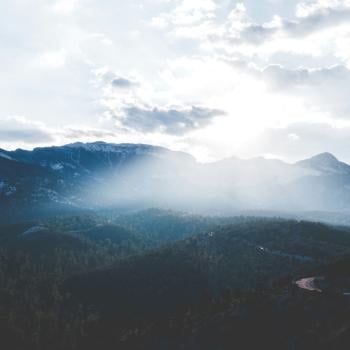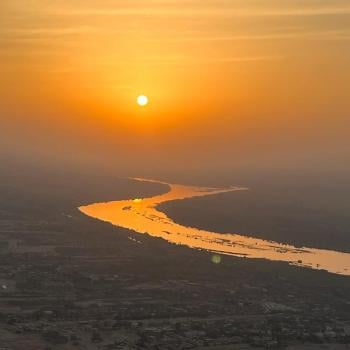Mt. Ararat is one big beautiful mountain, still snow covered at the end of May. The Bible in fact does not tell us Noah landed precisely here. What Gen. 8.4 in fact says is he came to rest on the mountains (plural) of Ararat, or as a better rendering would be, on the mountains of the Urartu range, which frankly range quite a ways to the south of Mt. Ararat. Modern Ararat itself is twin peaked, and is not part of a range, as pictures will attest. Furthermore, the high altitude of Mt. Ararat precludes the growing of the sort of vegitation (olives and grapes) featured in the Genesis account (Gen. 8.11 and 9.20).
Indeed, the truth is that Ararat is simply the Hebrew version of the word Urartu and that term refers not just to a range of mountains but to a whole people group whose sites my intrepid explorer colleague Mark Fairchild and I visited this time in Turkey (more on this later). But I digress. Urartu is an Assyrian term.
Mt. Ararat is 16,854 feet high and stands out from the remainder of the range. It was in fact in the 12 century A.D. that local tradition began to identify this particular mountain as landing spot for Noah’s boat. An earlier and alternate site was Cudi Dagi in far southeastern Turkey. In fact both Jewish and Muslim tradition says the latter site is the correct site, and they could be right. Unfortunately, Cudi Dagi is off limits due to terrorist activity by some of the more radical Kurds, and the Turkish government does not permit visiting, for safety’s sake. Modern efforts to find Noah’s ark have been numerous (most recently an Oriental group last year thought they found evidence of it, and are likely wrong). The matter is complicated.
For one thing, we know that in order to attract pilgrims, replicas were built at various Biblical sites even in the Middle Ages. One could go up Ararat and find something today, and it might be no more than a remnant of an earlier Christian reconstruction of a replica. And while we are talking about replicas, guess what—- Greenpeace (yes that Greenpeace) built a replica of the ark in 2007 at 8,000 feet up Mt. Ararat to provide a rest and respite stop for climbers of the mountain at the half way point to the top.
In our next post we will deal with Ark expeditions in the 1970s-90s, largely led by Americans, which led to the claim of finding an imprint of the ark on a hill at the village of Mahser nearby. For now, a few more pictures of Ararat. (note to the concerned— no I am not pregnant. That object under my shirt is my fat passport and wallet carrier).
Let me also leave you with a disclaimer. I do think there was a great ANE flood which covered what ancient writers thought was the then known world of the ANE. I think there is geological evidence of this in the region. I also know for a fact that there are important flood stories not only in the OT but also in the Gilgamesh Epic The earliest accounts of this epic in Sumerian date to about 2,000 B.C. and so probably predate the Biblical account. The similarities with the Biblical account are considerable and striking. My point is not to do a chicken and egg argument and try to decide which account is the source of the other, for in fact I think they are independent accounts, all attesting to a huge ancient flood, a desperate attempt of a Noah figure to assure some human and animal survival, and the big boat that was built. Whether we shall ever actually find the ark, or if there is anything that remains of it, remains to be seen.

















